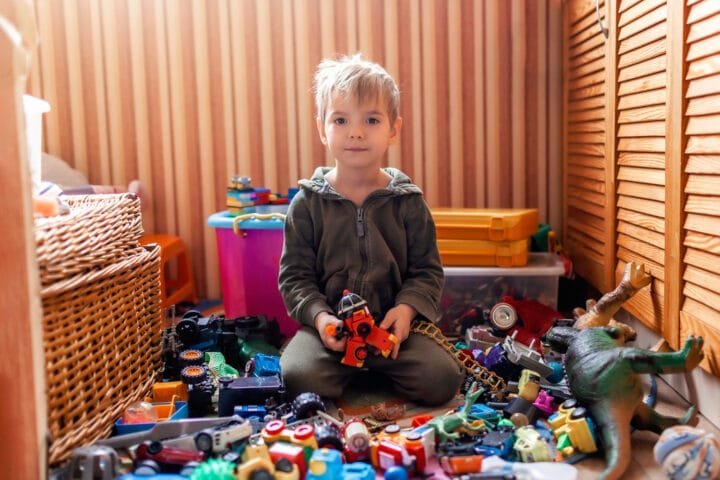Are You Ready to Foster? The Unexpected Joys (and Challenges) of Foster Parenting
A child stands on your doorstep carrying a backpack filled with unspoken fears, unknowable burdens, and a desperate need for stability. In the U.S. foster care system, hundreds of thousands of children face this reality. This system is stretched thin and desperately needs compassion. Children could find a haven, a loving home, and a chance to improve.
As well as being extremely challenging, foster parenting is also incredibly rewarding. When children face a difficult time, it’s about providing stability and support for them. This is a role that brings profound fulfilment. One child at a time, making a difference. It’s about finding love you didn’t know existed, growing, and being resilient.
From the moment you first became interested in foster parenting to the long-term commitment it requires, we’ll walk you through every aspect of foster parenting. Our discussion will include practical steps, an emotional rollercoaster, and the profound impact you can have on a child’s life, empowering you to make a significant difference.
I. The Call to Foster Care: Understanding the Need and the Impact
There are more than 400,000 foster children in the United States, ranging from newborns to teenagers. They come from various backgrounds, each with a different story. Most of them have experienced abuse, neglect, or family difficulties that prevent them from living at home.
As foster parents, we become more than just an anchor for these children. We become their lifeline. We provide a safe, nurturing environment for them to heal, grow, and thrive. We offer consistency, love, and support as they transition into adulthood.
Did you know? Studies show that children who have experienced foster care often show improved academic performance, increased self-esteem, and better social skills when placed in a stable and supportive foster home. They are more likely to graduate from high school and less likely to experience homelessness or incarceration as adults.
You don’t have to be married, own a house, or be rich to become a foster parent. What matters is your commitment to providing a loving and stable environment for needy children. Families with or without biological children, LGBTQ+ couples, and singles are encouraged to consider foster parenting.

II. Preparing for the Journey: What to Expect
Embarking on the foster parenting journey requires more than just an open door; it demands an open heart and a willingness to embrace the unexpected.
Emotional Readiness: It’s not always easy to raise foster children. They often carry emotional baggage from their past experiences. This is where your patience, empathy, and resilience come into play. Understanding their challenges and celebrating their small victories is critical to building trust.
My experience: During my first visit to our home, Lily, eight, was withdrawn, anxious, and afraid of the dark. She was relieved by simple things, such as leaving the hallway light on and placing an owl-shaped nightlight in her room. After months of gentle reassurance, bedtime stories, and consistent routines, she finally felt secure enough to sleep through the night. Watching her gradually change was challenging but rewarding. This is just one example of the many heartwarming things you can expect as a foster parent, reminding you to celebrate the small victories that bring hope and optimism.
Logistical Considerations: Meeting specific licensing requirements before welcoming a child into your home is essential. These requirements include thorough background checks, home safety inspections, and mandatory training sessions. The training sessions cover various topics, from child development to foster parenting law.
In addition to learning how to create a safe and stimulating environment for children, you’ll also learn how to navigate foster care complexities. It’s a comprehensive process designed to ensure that you are well-prepared to provide the best care for the children.
Make sure you meet all the requirements by creating a detailed checklist. Don’t be afraid to ask your social worker for guidance and support. They are your partners on this journey and can provide invaluable insights and resources. Your social worker will guide you through each step, from the initial application to the final placement. They will help you understand the licensing process, prepare your home, and provide support during the placement. Remember, you aren’t alone. Support systems guide you through each step.
The Placement Process: Waiting is the most challenging part. Once you’ve completed the licensing process, you’ll work with your agency to find a child who matches your family well. Be prepared to answer questions about your parenting style, experience with children, and ability to meet a child’s specific needs. You may also be asked about your support system, lifestyle, and expectations for foster parenting.
This is a two-way street. You can ask questions about the child’s history, needs, and reasons for foster care. Gather as much information as possible to make an informed decision and ensure a successful placement.

III. Navigating the Foster Parent Role: Building Relationships and Supporting Growth
Taking a foster child into your home is just the beginning. The real work is building trust and giving them the support they need to grow and heal.
Trauma-Informed Care: Children’s behaviour and feelings are heavily influenced by traumatic events, so providing trauma-informed care is crucial. This approach can make the children feel secure and loved in a safe, predictable environment. With this knowledge, you can navigate their challenges by celebrating their strengths, making you more prepared and knowledgeable. Just as plants need time to adjust, establish new roots, and thrive in a new garden, foster children need time, patience, and nurturing to succeed in their adopted homes.
Biological Families: Often, foster care aims to reunite a child with their biological family, which means working collaboratively with them to support their progress toward reunification. It can be hard to let go when you become attached to the child. Despite this, you can play a crucial role in helping the child maintain a positive relationship with their family and facilitate a successful transition.
Statistics indicate that nearly half of foster children are reunited with their families. You are responsible for supporting this process, even if it means saying goodbye to the child you love. Foster care provides a temporary, safe environment for children to heal and grow. You must remember that you played an essential role in their lives and helped them rejoin their families, no matter how difficult.
Advocating for the Child: It is your responsibility as a foster parent to advocate for the child’s educational needs, to ensure proper healthcare and mental health services, and to understand its legal rights. You will be empowered to serve as their champion, protector, and guide, ensuring their needs are met in this role.
IV. Self-Care and Support for Foster Parents: Maintaining Well-being
Foster parenting is a marathon, not a sprint. It can be emotionally draining, and it’s essential to prioritize your well-being.
Recognizing the Challenges: Burnout is a real risk. Recognize the signs of emotional exhaustion, compassion fatigue, and detachment. Don’t be afraid to ask for help. Contact your support system, talk to your social worker, or seek professional counselling. I felt overwhelmed by foster parenting.
I learned the importance of setting boundaries, taking breaks, and seeking support from other foster parents. Joining a support group was game-changing. It provided a safe space to share my experiences, connect with others who understood, and learn valuable coping strategies.
Prioritizing Self-Care: Make time for yourself, even if it’s just 15 minutes a day. Engage in activities that bring you joy and recharge. Connect with other foster parents who understand your unique challenges. Exercise, enjoy nature, pursue hobbies, or relax with an enjoyable book.
Join a support group, attend foster parent training sessions, or find a mentor for guidance and encouragement. These connections can provide a lifeline during challenging times and remind you that you’re not alone on this journey.
Celebrating Successes: Foster parenting is filled with small victories. Celebrate each milestone, each step forward, each connection. Remember that you make a difference in a child’s life. Whether it’s a child’s first smile, a successful school report, or a heartfelt “thank you,” take the time to acknowledge and appreciate these moments.

V. Looking Ahead: Different Paths in Foster Care
Foster care can take many paths.
It’s a bittersweet moment when a child reunites with their family. You will feel joy and sadness at the same time. Maintain open communication with the family and support the child throughout this transition. Help them prepare for the move, pack their belongings, and say goodbye. Give them reassurance and support during this time of transition.
A child may remain in foster care for an extended period, perhaps even into adulthood, due to a variety of factors, including their family situation or the need for specialized care. It is essential to provide stability and a sense of belonging and to help children build a bright future if you’re considering long-term foster care. It is necessary to assist them in developing critical life skills, supporting their education, and encouraging their passions.
A primary goal of foster care is to reunite children with their families. Still, the child’s well-being always takes precedence. When reunification is not possible, or in the child’s best interest, long-term foster care provides a stable and supportive environment.
Sometimes, adoption is the best option for a child. Adoption is a legal arrangement in which you become the child’s parents, and you have all the rights and responsibilities. Be prepared to undergo a complex adoption process involving legal and emotional concerns. The rewards of building a forever family are immeasurable. Still, you must complete a home study, go through background checks, and attend adoption training.
Approximately 57,000 foster children will be adopted in 2020, making adoption from foster care an exciting and meaningful process for both adoptive parents and children.
Recommended Reading for Foster Parents
- The Connected Child: Bring Hope and Healing to Your Adoptive Family by Karyn Purvis, David R. Cross, and Wendy Lyons Sunshine: This book is a must-read for any foster parent. It provides practical strategies based on Trust-Based Relational Intervention (TBRI) to help children heal from trauma and build healthy attachments. You’ll learn how to create a safe and nurturing environment, address challenging behaviours with compassion, and meet the unique needs of children who have experienced adversity.
- Building the Bonds of Attachment: Awakening Love in Deeply Traumatized Children by Daniel A. Hughes: This book delves into the complexities of attachment theory and how early trauma can disrupt a child’s ability to form secure attachments. It offers valuable insights into the emotional world of traumatized children. It provides practical guidance on building trust, nurturing connections, and creating a sense of safety and belonging.
- Twenty Things Adopted Kids Wish Their Adoptive Parents Knew by Sherrie Eldridge: This book offers a unique perspective by sharing insights directly from adopted individuals. It provides a glimpse into the inner world of children who have experienced foster care and adoption, shedding light on their emotions, questions, and struggles. This book can help foster parents develop greater empathy and understanding, leading to more meaningful connections with the children in their care.
- Another Place at the Table: A Story of Shattered Childhoods Redeemed by Love by Kathy Harrison: This book offers a compassionate and realistic look at the challenges and rewards of foster care. It explores the complexities of building relationships with foster children, working with biological families, and navigating the foster care system. It’s a valuable resource for foster parents seeking guidance and support as they navigate the unique dynamics of foster families.
- The Whole-Brain Child: 12 Revolutionary Strategies to Nurture Your Child’s Developing Mind by Daniel J. Siegel and Tina Payne Bryson: This book offers a fascinating look at how a child’s brain develops and how experiences shape their emotional and social well-being. It provides practical strategies for understanding and responding to children’s emotions, behaviours, and needs, helping foster parents create a supportive environment where children can thrive.
Summary: Foster Parenting Rewards and Challenges
Being a foster parent is a profound experience that changes your life. It involves a commitment to love, nurture, and support a needy child. It’s about opening your heart and home to the unexpected, embracing the challenges, and celebrating the small victories. Even if it is for just a few days, it’s about positively impacting a child.
It isn’t always easy, but let’s be honest. You will experience tough days, sleepless nights, and moments of overwhelm. Still, you will also encounter moments of pure joy, laughter, and connection. You will witness incredible resilience, celebrate milestones, and form bonds that will last a lifetime.
FAQs
Absolutely! Many foster parents successfully balance their careers with the demands of fostering. Here’s how:
Flexible work arrangements: Explore options like telecommuting, flextime, or compressed workweeks to create more flexibility in your schedule.
Robust support system: Enlist the help of family, friends, or a babysitter to provide childcare when needed.
Respite care: Utilize respite care services to provide temporary care for your foster child while working or needing a break.
Open communication with your employer: Discuss your foster parenting plans with your employer to ensure they understand your commitment and potential need for flexibility.
Age requirements vary by state, but generally, foster parents must be at least 18 or 21 years old. Some agencies may have additional age-related guidelines or preferences. However, maturity, life experience, and providing a stable and nurturing environment are more important than a specific number.
Yes, you can! There is a significant need for foster parents who are willing to open their homes to children with special needs. These children may have physical, intellectual, or emotional disabilities that require specialized care and support. This could be advantageous if you have experience or a passion for working with children with special needs.
Important note: Foster parents who care for children with special needs receive additional training and support to meet the unique needs of these children.
This is a common concern and a testament to the deep bonds that can form between foster parents and children. It’s important to remember that the primary goal of foster care is reunification, whenever possible. While saying goodbye can be heartbreaking, supporting the child’s transition back to their family is crucial.
Coping strategies: Focus on your positive impact on the child’s life.
Maintain contact with the child and their family if appropriate.
Seek support from your agency, therapist, or foster parent support group.
Remember that you’ve played a vital role in the child’s life and helped them on their journey to reunification.
Taking the first step is often the hardest but also the most exciting! Here’s how to get started:
Contact your local foster care agency: They will provide information about licensing requirements, training sessions, and the next steps in the process.
Attend an orientation meeting: These meetings offer a comprehensive overview of foster parenting and answer common questions.
Complete the application process, which typically involves background checks, home inspections, and interviews.
Participate in pre-service training: These sessions equip you with the knowledge and skills needed to be a successful foster parent.
Related Posts














































































